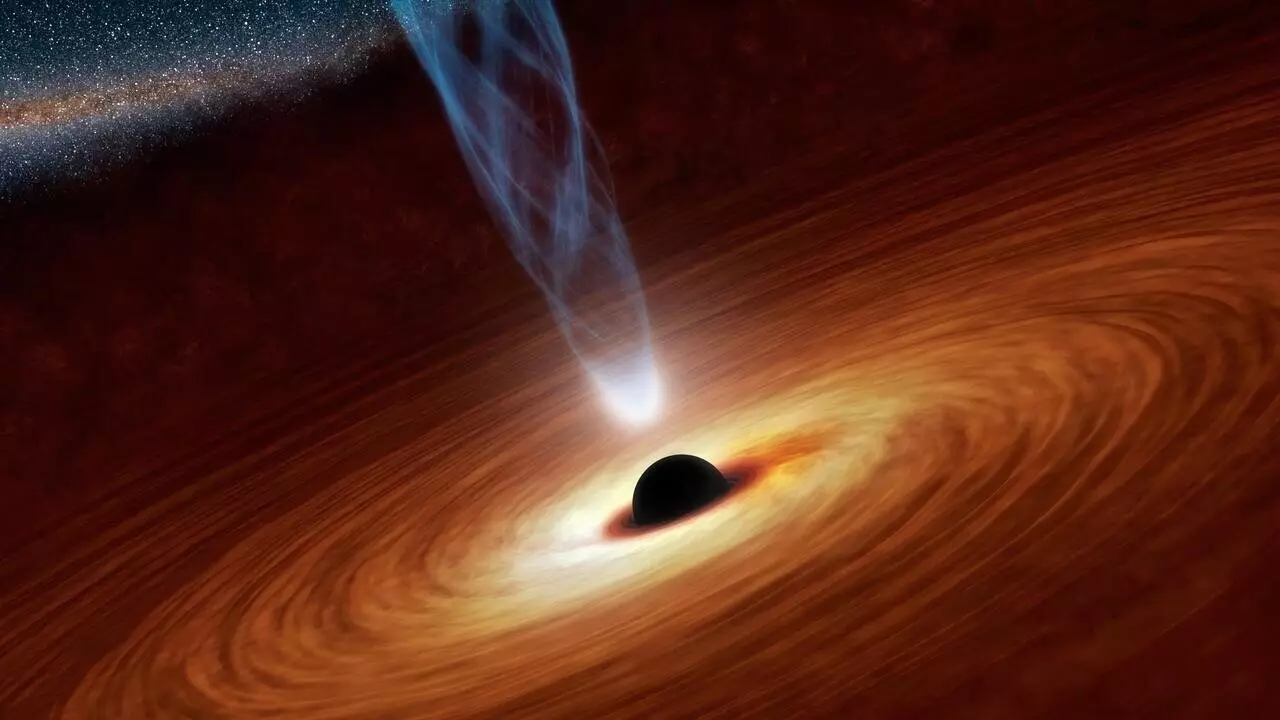For the past seventy years, scientists have been studying the concept of “kugelblitze” – black holes formed by intense concentrations of light. This idea has been linked to various astronomical phenomena and even proposed as a potential power source for futuristic spacecraft engines. However, recent research by a team from the University of Waterloo and Universidad Complutense de Madrid has revealed that kugelblitze are actually impossible in our current universe.
The team of researchers, led by Professor Eduardo Martín-Martínez, used a mathematical model that incorporated quantum effects to study the feasibility of creating kugelblitze through concentrated light. Their findings indicated that the amount of light required for such an event would be orders of magnitude greater than anything observed in the universe, including quasars, the brightest celestial objects.
Ph.D. candidate Josè Polo-Gómez explained that before reaching the necessary light intensity for kugelblitze, quantum effects would cause the spontaneous creation of particles like electron-positron pairs, which would rapidly disperse from the region. This limitation highlights the impossibility of achieving the conditions for the formation of these unique black holes.
Scientific Principles and Predictions
The research team’s predictions were based on well-established scientific principles, including vacuum polarization and the Schwinger effect. By drawing parallels to phenomena like matter-antimatter annihilation in PET scans, the researchers were able to validate their findings and confidently assert the impossibility of kugelblitze in our universe.
While the discovery that kugelblitze are unattainable may be disheartening for astrophysicists, it represents a significant achievement in fundamental physics research. This breakthrough underscores the importance of collaboration between applied mathematics, institutions like the Perimeter Institute, and the Institute for Quantum Computing in advancing our understanding of the universe.
Professor Martín-Martínez emphasized that even though the practical applications of these discoveries may not be immediately apparent, they are paving the way for future technological innovations. By exploring the boundaries of physics and uncovering the impossibility of certain phenomena, scientists are laying the groundwork for advancements that may benefit future generations.
The research conducted by the team from the University of Waterloo and Universidad Complutense de Madrid sheds light on the limitations of creating kugelblitze using intense concentrations of light. By integrating quantum effects into their analysis and leveraging established scientific principles, the researchers have definitively shown that these unique black holes are unachievable in our universe. While this may come as a disappointment to some in the astrophysics community, it serves as a testament to the power of collaboration and the pursuit of knowledge in pushing the boundaries of our understanding of the cosmos. Through continued research and exploration, we may uncover even more remarkable insights into the mysteries of the universe.


Leave a Reply